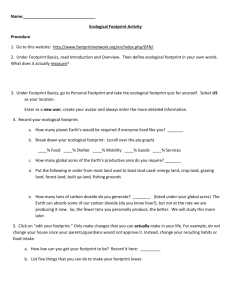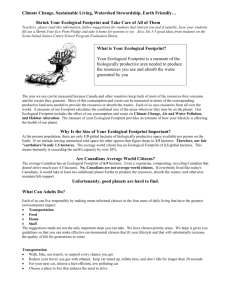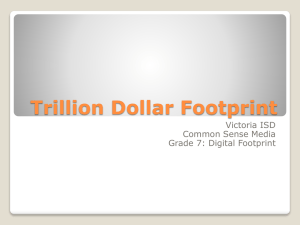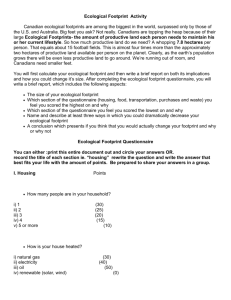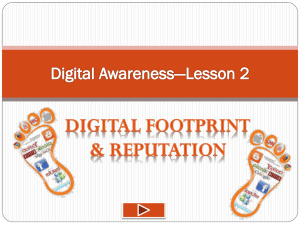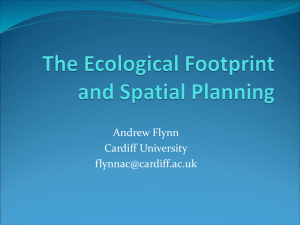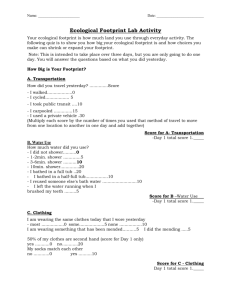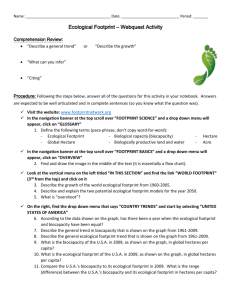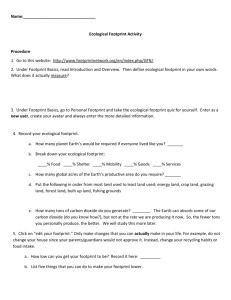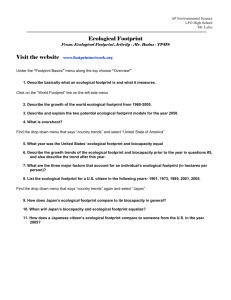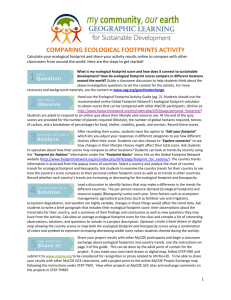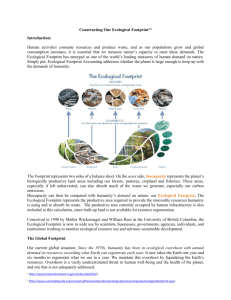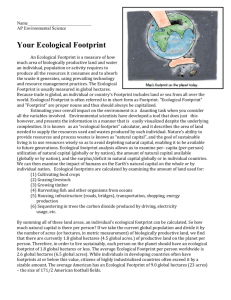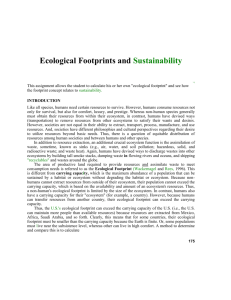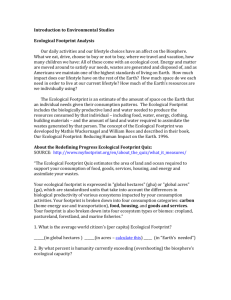second part of the assignment
advertisement
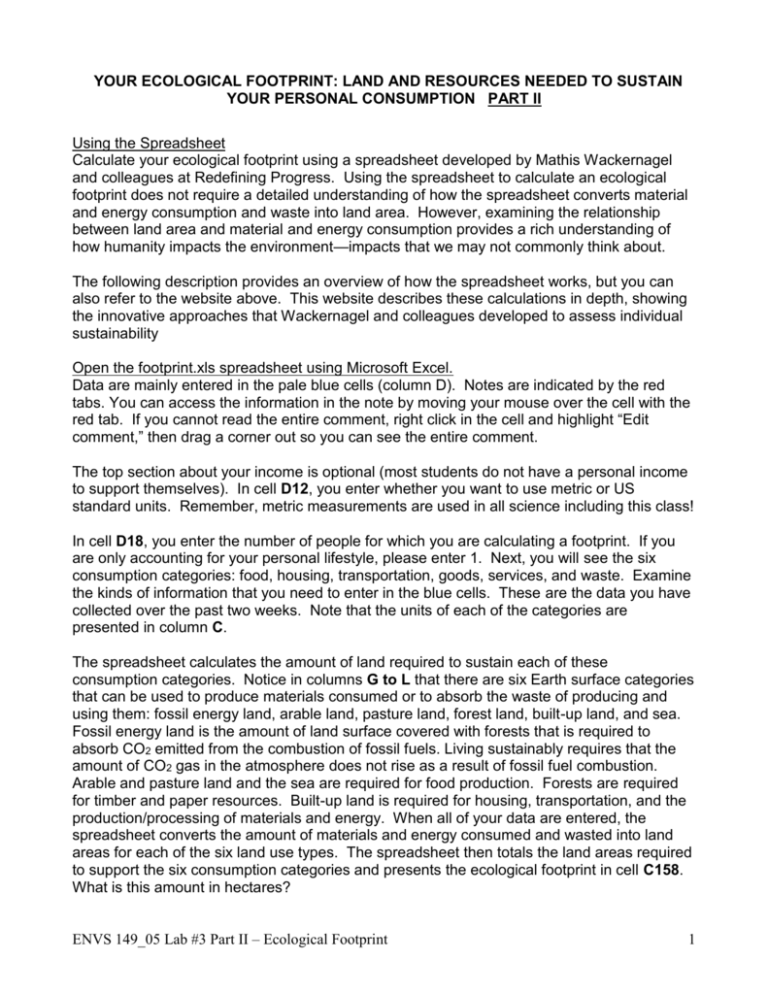
YOUR ECOLOGICAL FOOTPRINT: LAND AND RESOURCES NEEDED TO SUSTAIN YOUR PERSONAL CONSUMPTION PART II Using the Spreadsheet Calculate your ecological footprint using a spreadsheet developed by Mathis Wackernagel and colleagues at Redefining Progress. Using the spreadsheet to calculate an ecological footprint does not require a detailed understanding of how the spreadsheet converts material and energy consumption and waste into land area. However, examining the relationship between land area and material and energy consumption provides a rich understanding of how humanity impacts the environment—impacts that we may not commonly think about. The following description provides an overview of how the spreadsheet works, but you can also refer to the website above. This website describes these calculations in depth, showing the innovative approaches that Wackernagel and colleagues developed to assess individual sustainability Open the footprint.xls spreadsheet using Microsoft Excel. Data are mainly entered in the pale blue cells (column D). Notes are indicated by the red tabs. You can access the information in the note by moving your mouse over the cell with the red tab. If you cannot read the entire comment, right click in the cell and highlight “Edit comment,” then drag a corner out so you can see the entire comment. The top section about your income is optional (most students do not have a personal income to support themselves). In cell D12, you enter whether you want to use metric or US standard units. Remember, metric measurements are used in all science including this class! In cell D18, you enter the number of people for which you are calculating a footprint. If you are only accounting for your personal lifestyle, please enter 1. Next, you will see the six consumption categories: food, housing, transportation, goods, services, and waste. Examine the kinds of information that you need to enter in the blue cells. These are the data you have collected over the past two weeks. Note that the units of each of the categories are presented in column C. The spreadsheet calculates the amount of land required to sustain each of these consumption categories. Notice in columns G to L that there are six Earth surface categories that can be used to produce materials consumed or to absorb the waste of producing and using them: fossil energy land, arable land, pasture land, forest land, built-up land, and sea. Fossil energy land is the amount of land surface covered with forests that is required to absorb CO2 emitted from the combustion of fossil fuels. Living sustainably requires that the amount of CO2 gas in the atmosphere does not rise as a result of fossil fuel combustion. Arable and pasture land and the sea are required for food production. Forests are required for timber and paper resources. Built-up land is required for housing, transportation, and the production/processing of materials and energy. When all of your data are entered, the spreadsheet converts the amount of materials and energy consumed and wasted into land areas for each of the six land use types. The spreadsheet then totals the land areas required to support the six consumption categories and presents the ecological footprint in cell C158. What is this amount in hectares? ENVS 149_05 Lab #3 Part II – Ecological Footprint 1 What you turn in: Questions: Please indicate some thought in answering these questions. 1. What is your footprint, in hectares? List the factors, from largest to smallest, that contributed most to your footprint. What (if anything) surprised you about this list? 2. Considering the amount of land required to maintain your lifestyle, in what categories (food, housing, etc.) might your lifestyle be sustainable? Not sustainable? 3. What specific actions could you take to reduce your footprint? If you were to take actions to reduce your footprint, in what ways would your lifestyle be fundamentally different? How realistic or achievable are these reductions? 4. There are approximately 12 billion hectares of land on planet Earth. If everyone on planet Earth were to use your eco-footprint how many planet Earths would we need? Show your calculations clearly. ENVS 149_05 Lab #3 Part II – Ecological Footprint 2



